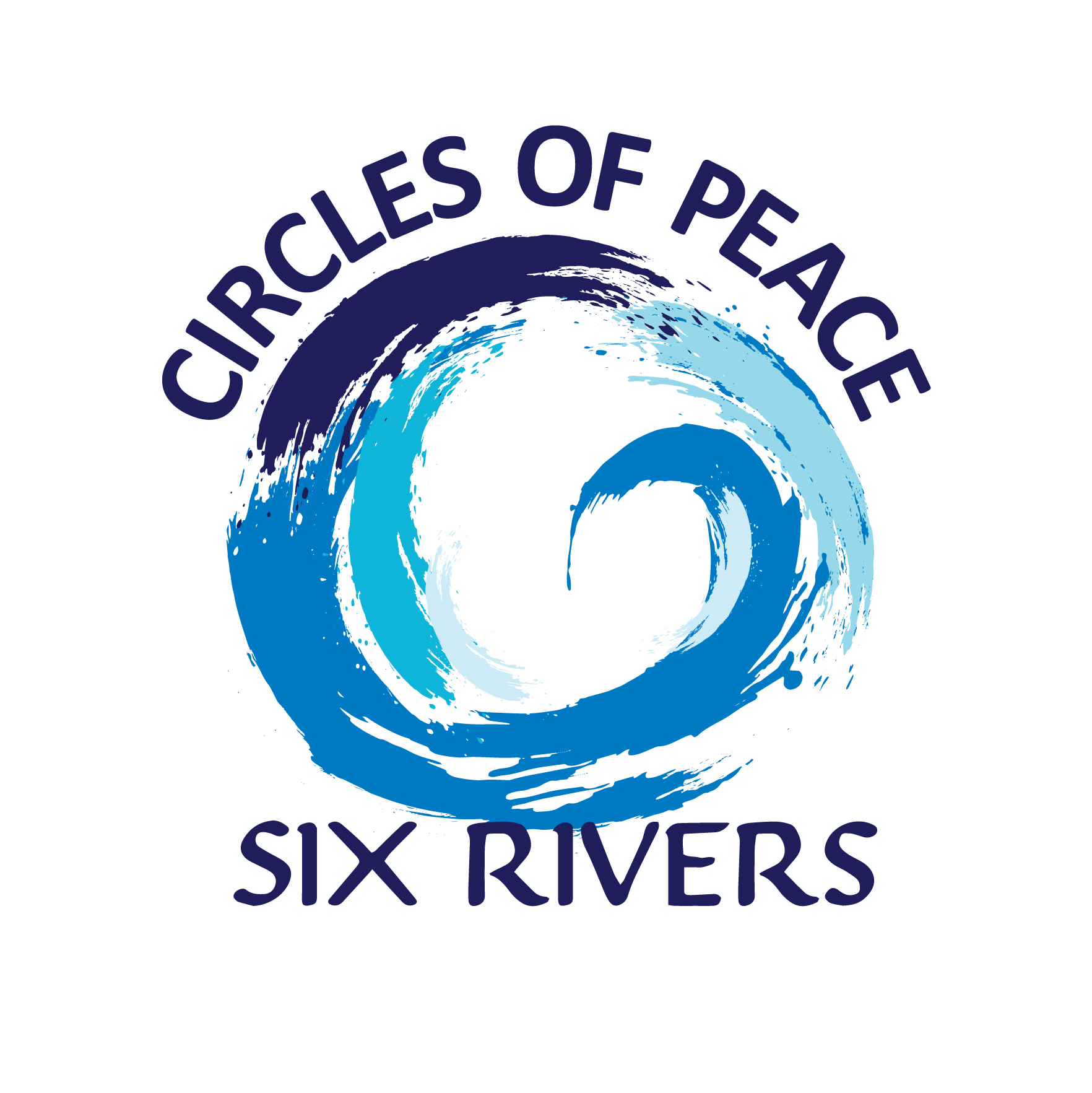
What Are Circles of Peace?
Accountability
Safety
Healing
The Circles of Peace program helps address crime and harm by focusing on repairing the damage done, keeping everyone safe, and promoting healing. It’s an alternative to the usual way of handling these things through the justice system and is a proven alternative that prevents crime from happening again. Accountability develops in responsible parties when a process is in place that requires them to see and understand how the harm affected everyone involved, including the community. Accountability is the key to safer communities, and helps promote healing.
Who runs Circles of Peace?
The program is run by Six Rivers DRC. We are independent and not part of the legal system or law enforcement. We receive referrals from victim advocates, attorneys, law enforcement, and the community at large.
What is the cost to participate in Circles of Peace?
There is no cost; the program is free.
Why participate in Circles of Peace?
- Survivors of harm get to have a say in what happens next, including how much they want to be involved.
- People who caused harm get the chance to take responsibility for what they did and try to make things better.
- Studies show that this approach reduces the chances of harm happening again.
- Survivors usually feel satisfied with the process and the outcome.
- Taking part in these processes can help survivors feel safer and lessen the effects of trauma.
How does Circles of Peace work?
- Cases are referred to Circles of Peace by the criminal legal system.
- The Circles of Peace team meets with those involved to explain how the program works.
- Together, they decide if the case is suitable for the program. This process involves in-depth assessments for safety, potential for accountability, and based on the case, screenings for substance use, mental health, and aggression, by a licensed clinician. If the case is enrolled, it is handled by the Circles of Peace team as an alternative to the criminal legal system.
What happens during Circles of Peace?
For survivors: You can choose how much you want to participate. You might join talking circles where you discuss what happened and how it affected you. You might also have the option to communicate with the person who harmed you, if you want. If you choose, a stand-in or victim advocate could participate in talking circles instead of you.
For the person who caused harm: You’ll have to join talking circles where you talk about the impact of your actions. You’ll also agree to make things better as outlined in repair agreements. You might get to communicate with the survivor if they agree to it.
Is Circles of Peace safe for survivors?
Ensuring survivor safety is a top priority. The Circles of Peace team uses an in-depth assessment for safety, potential for accountability, and based on the case, screenings for substance use, mental health, and aggression, by a licensed clinician. A victim advocate will be available when needed, and the Circles of Peace team will always monitor safety.
How long does Circles of Peace take?
It varies depending on the case. Some cases might be resolved quickly, while others could take months. Cases close when we have reached our goals for safety, accountability, repair, and healing.
Where does Circles of Peace come from?
Circles of Peace is inspired by practices used by many cultures, especially Native American communities, for thousands of years. It’s an ancient approach that has been proven effective over time, and the Circles of Peace team respects and acknowledges this history.
For more information, contact Six Rivers at ; 541 386 1283.
Rendición de cuentas
Seguridad
Sanación
¿Qué es Círculos de Paz?
El programa Círculos de Paz ayuda a abordar el crimen y el daño centrándose en reparar el daño causado, mantener a todos a salvo y promover la sanación. Es una alternativa a la forma habitual de manejar estas cosas a través del sistema de justicia y es una alternativa comprobada que evita que el crimen vuelva a ocurrir. La rendición de cuentas se desarrolla en las partes responsables cuando existe un proceso que les exige ver y comprender cómo el daño afectó a todos los involucrados, incluida la comunidad. La rendición de cuentas es la clave para comunidades más seguras y ayuda a promover la sanación.
¿Quién dirige Círculos de Paz?
El programa está dirigido por Six Rivers DRC. Somos independientes y no formamos parte del sistema legal ni de las fuerzas del orden. Recibimos referencias de defensores de víctimas, abogados, fuerzas del orden y la comunidad en general.
¿Cuál es el costo de participar en Círculos de Paz?
No tiene costo; el programa es gratuito.
¿Por qué participar en Círculos de Paz?
- Los sobrevivientes de un daño pueden opinar sobre lo que sucederá después, incluido el grado de participación que desean.
- Las personas que causaron un daño tienen la oportunidad de asumir la responsabilidad de lo que hicieron e intentar mejorar las cosas.
- Los estudios muestran que este enfoque reduce las posibilidades de que vuelva a ocurrir un daño.
- Los sobrevivientes generalmente se sienten satisfechos con el proceso y el resultado.
- Participar en estos procesos puede ayudar a los sobrevivientes a sentirse más seguros y reducir los efectos del trauma.
¿Cómo funciona Circles of Peace?
- El sistema legal penal deriva los casos a Circles of Peace.
- El equipo de Circles of Peace se reúne con los involucrados para explicarles cómo funciona el programa.
- Juntos, deciden si el caso es adecuado para el programa. Este proceso implica evaluaciones exhaustivas de seguridad, potencial de rendición de cuentas y, según el caso, evaluaciones de consumo de sustancias, salud mental y agresión por parte de un médico autorizado. Si el caso se inscribe, el equipo de Circles of Peace lo maneja como una alternativa al sistema legal penal.
¿Qué sucede durante Circles of Peace?
Para los sobrevivientes: puedes elegir cuánto quieres participar. Puedes unirte a círculos de conversación donde hablas sobre lo que sucedió y cómo te afectó. También puedes tener la opción de comunicarte con la persona que te lastimó, si lo deseas. Si lo eliges, un sustituto o defensor de víctimas podría participar en los círculos de conversación en tu lugar.
Para la persona que causó el daño: tendrás que unirte a círculos de conversación donde hablas sobre el impacto de tus acciones. También aceptarás mejorar las cosas según lo descrito en los acuerdos de reparación. Puedes comunicarte con el sobreviviente si está de acuerdo.
¿Círculos de Paz es seguro para los sobrevivientes?
Garantizar la seguridad de los sobrevivientes es una prioridad máxima. El equipo de Círculos de Paz utiliza una evaluación exhaustiva de la seguridad, el potencial de rendición de cuentas y, según el caso, evaluaciones de consumo de sustancias, salud mental y agresión, realizadas por un médico autorizado. Un defensor de víctimas estará disponible cuando sea necesario, y el equipo de Círculos de Paz siempre supervisará la seguridad.
¿Cuánto duran los Círculos de Paz?
La duración varía. Algunos casos se resuelven rápidamente, mientras que otros pueden tardar meses. Los casos se cierran cuando alcanzamos nuestras metas de seguridad, responsabilidad, reparación y sanación.
¿De dónde proviene Circles of Peace?
Circles of Peace está inspirado en prácticas utilizadas por muchas culturas, especialmente las comunidades nativas americanas, durante miles de años. Es un enfoque antiguo que ha demostrado ser eficaz a lo largo del tiempo. El equipo de Circles of Peace respeta y reconoce esta historia.
Community Assessment Results
What does accountability look like to you?
With guidance from NYU’s Center on Violence and Recovery, we conducted a community readiness assessment in the spring and summer of 2023. We interviewed leaders in our communities who serve in law enforcement, victim advocacy, the criminal justice system, and agencies who provide essential services. We also received direct input from community members through an ongoing survey.
We learned a tremendous amount about the strengths of our community and about areas that need additional options and resources. We were encouraged to find that community values around accountability, survivor needs, safety, and behavior change are in alignment with core restorative justice values.
To see the results of our community assessment, please click the link below.
Throughout our Circles of Peace pilot year, we will continue to collect community survey responses. We seek to hear from a wide range of community members. If you would like to participate in the community survey, please click the links below.
![]() English: Public Survey
English: Public Survey
![]() Español: Encuesta pública
Español: Encuesta pública
Circles of Peace Pilot Year
Through 2024, Six Rivers will run a pilot Circles of Peace restorative justice program, using peacemaking circles to address harm. The Circles of Peace model was developed by NYU’s Center on Violence and Recovery and has been rigorously studied for 20 years. Studies from the National Science Foundation and the National Institute of Justice have shown it to be a safe and effective model, with significantly lower recidivism rates and high levels of survivor satisfaction.
Six Rivers’ Circles of Peace program has been adapted for our rural communities. Our program carefully screens for safety and suitability and monitors cases closely throughout the process. A certified victim advocate is available to be present at circle meetings when needed. Accountability and repair agreements are also closely monitored for follow-through.
Additionally, in the fall of 2023, Six Rivers launched a survivor support circle program to create opportunities for healing and connection for survivors of harm.
To learn more about what research says about restorative justice and Circles of Peace, please visit this link.
Committed Parters
Six Rivers is grateful for the many partners who have made valuable contributions during our 18-month planning and design phase. We give thanks to the following entities:
- The Oregon Criminal Justice Commission and Department of Justice, which have supported our program with grants;
- Our design team, which is made up of victim advocates, prosecutors, public defenders, and community service providers;
- New York University’s Center on Violence and Recovery, which has provided expert technical and training advising;
- Community leaders who have generously shared their expertise;
- Community members who provided input in our community survey;
- Six Rivers board, volunteers, and supporters!
